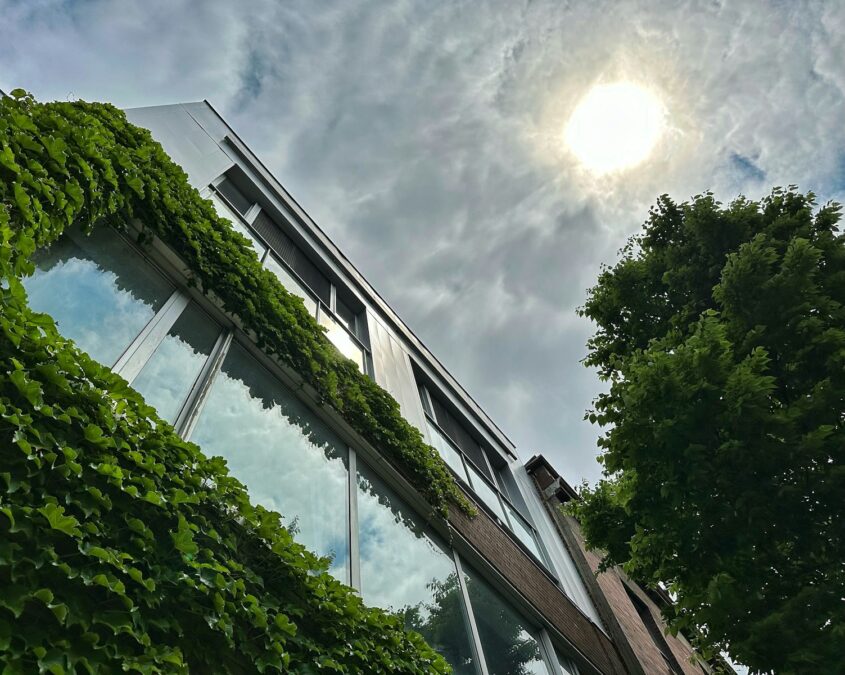Combating Urban Heat Through Innovative City Planning and Design
Understanding the Urban Heat Island Effect
The Urban Heat Island (UHI) effect significantly impacts city climates, making urban areas warmer than their rural counterparts. This phenomenon occurs due to the extensive use of building materials that absorb and retain heat, limited vegetation, and high energy consumption in densely populated areas. Cities like Dubai and Riyadh, known for their rapid urbanization and towering skyscrapers, are particularly susceptible to this effect, which can exacerbate the discomfort from high temperatures.
Smart Planning to Reduce Heat Absorption
Effective mitigation of the Urban Heat Island effect involves strategic urban planning and building design. Incorporating reflective materials in roadways, rooftops, and building facades can reflect more sunlight and absorb less heat. Additionally, promoting the design and construction of green roofs can help lower roof surface temperatures significantly. In cities such as Riyadh and Dubai, where the heat can be particularly intense, these smart design choices are not just beneficial; they are necessary for reducing the overall urban temperature and improving residents’ comfort.
Enhancing Green Spaces to Cool Urban Areas
Incorporating more green spaces such as parks, gardens, and green corridors can combat the UHI effect by providing shade and reducing surface and air temperatures through the process of transpiration. Urban planning that includes large, verdant spaces can transform the environmental landscape and urban climate, promoting healthier and more sustainable living conditions. This strategy has been a priority in places like Dubai, where urban forestry initiatives are integral to city planning, demonstrating a commitment to environmental sustainability.
Utilizing Technology for Better Urban Environments
Advancements in technology offer novel approaches to managing the UHI effect. The use of Artificial Intelligence in monitoring climate conditions and managing energy use in buildings can optimize air conditioning usage to reduce heat generation. AI can also support the development of smart grids in urban areas, adjusting energy consumption to minimize the environmental heat load. Cities like Riyadh are exploring these technologies to enhance their sustainability efforts and mitigate the impact of urban heat.
Community Involvement in Urban Cooling Initiatives
Community engagement is essential in the successful implementation of urban cooling measures. Educational programs that inform residents about the benefits of energy conservation and sustainable landscaping can motivate community-wide participation in heat mitigation strategies. In the UAE, community-led initiatives such as tree-planting campaigns and sustainability workshops play a crucial role in enhancing urban environments and reducing the heat island effect.
Regulatory Measures and Policies to Support UHI Mitigation
Government policies and regulations play a pivotal role in combating the UHI effect. By enforcing building codes that require the use of reflective materials and the integration of green spaces, cities can ensure consistent implementation of heat-reducing practices. In Saudi Arabia, environmental regulations are being updated to include standards and practices specifically aimed at urban heat reduction, highlighting the government’s role in fostering sustainable urban development.
Advanced Building Materials for Heat Reduction
Another innovative approach to mitigating the Urban Heat Island effect is the use of advanced building materials. These materials, designed to reflect solar radiation and enhance thermal performance, can significantly reduce the amount of heat absorbed by buildings thereby lowering ambient temperatures. In cities like Riyadh and Dubai, which are subject to extreme temperatures, utilizing such materials not only contributes to cooler urban environments but also reduces the energy consumption required for air conditioning, promoting greater energy efficiency and sustainability in urban construction practices.
Strategic Shading and Ventilation Techniques
Strategic shading and natural ventilation are critical components of smart urban design that help mitigate the heat island effect. By designing buildings and outdoor spaces to maximize shade from trees and constructed features, urban areas can significantly decrease surface temperatures. Additionally, architectural designs that enhance natural ventilation can help expel heat accumulation in urban areas, improving comfort levels for residents. These techniques are especially relevant in the Middle Eastern context, where traditional architecture often incorporates elements such as wind towers to naturally cool buildings, reflecting a blend of historical wisdom and modern environmental science.
Policy Integration for Sustainable Urban Development
Effective policy integration is crucial for sustained success in reducing the Urban Heat Island effect. This involves aligning urban planning, environmental, and building regulations to create a cohesive strategy that addresses heat reduction comprehensively. For instance, policies that mandate the use of green roofs in new commercial developments have been implemented in some cities to promote sustainability. Similarly, incentives for retrofitting existing buildings with materials that reflect rather than absorb heat can accelerate the adoption of smart climate practices. In Dubai and Riyadh, where rapid development continues, such integrated policies are essential to ensure that urban growth is balanced with environmental consciousness and sustainability.
#UrbanHeatIsland, #SmartPlanning, #Sustainability, #CityPlanning, #Dubai, #Riyadh, #GreenBuildings, #EnergyEfficiency, #UrbanForestry, #ArtificialIntelligence, #CommunityInvolvement, #EnvironmentalSustainability, #ClimateChange









